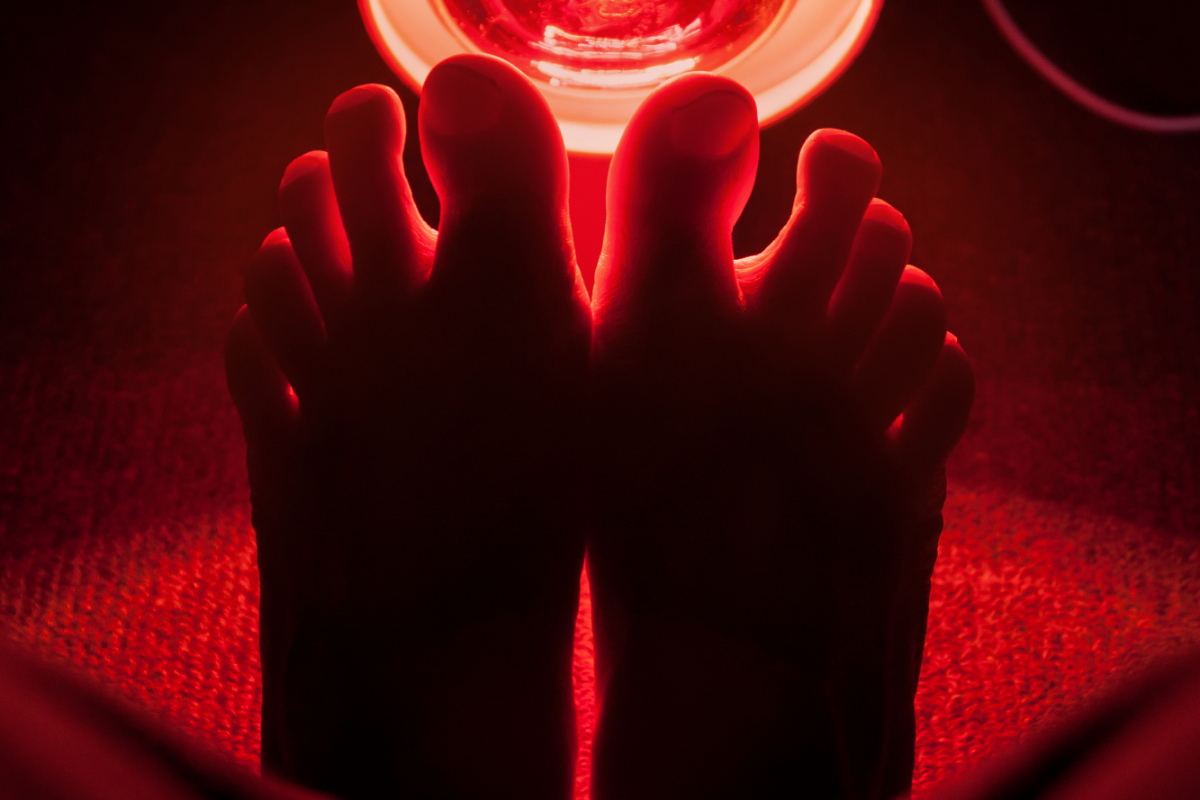Why is infrared therapy effective in plantar fasciitis recovery? Infrared light allows the heat to penetrate up to 2 inches into the foot tissue, whereas surface heat only penetrates a few millimeters below the surface. This deeper infrared penetration reaches the damaged tissue deep within the foot and promotes better blood flow, which in turn promotes further healing.
A Clinical Trial on plantar fasciitis patients concluded that infrared therapy was an effective and safe treatment, as part of a recovery plan for the condition.
How does Infrared Light Therapy Work With Plantar Fasciitis
Infrared light is invisible to the naked eye, but is felt as heat within the body.
By applying infrared light to the sole of the foot, the deeper penetrating effect of the light allows the heat to reach the damaged plantar fascia tissue.
With the heat reaching the damaged tissue deep within the foot, the circulation is increased and highler levels of oxygen and beneficial nutrients are provided to promote further healing.
Surface Heat Vs Infrared Heat?
Although surface heat will have a soothing effect on the pain and inflammation felt in the foot, the heat itself only goes a few millimeters below the surfce of the skin.
Applying the surface heat will have sensation of pain relief, however it will not be bringing the effective healing properties that the infrared light brings to the deeper damaged tissue.
Ultraviolet Vs Infrared ?
Although Ultraviolet can be used as a method of healing, it can also damage the skin. Without getting too tchnical or scientific, the wavelength of ultraviolet light are shorter than that of infrared light and so can effect the skin cells more easily and potetially cause them damage or mutation, leading to conditions such as skin cancer.
The infrared light uses longer light waves that are much less likely to have a harmful effect, and more likely to promote healing without any adverse side effects.
Is Infrared Therapy The Same As Red Light Therapy?
No, infrared and red light therapy are similar but perform differently.
Red light therapy is a visible red light that is applied to the surface of the skin. As mentioned earlier, surface heat only penetrates a few millimeters below the surface of the skin and so is effective for skin based conditions.
The infrared light is invisible to the naked eye and penetrates much deeper than the red light, which is why it is more effective at reaching and healing the damaged plantar fascia deep within the foot.
That is not to say that you would not feel some pain relief by placing red light treatment to the sole of the foot. The red light therapy would be similar to applying a heat pack or hot pad tot he foot in as much as it would bring some pain relief and feel good, however it would not be penetrating deep enough to promote healing to the damaged plantar fascia tissue.
Many people prefer the ease and relief that red light therapy provides, and so we have provided a book recommendation at the end of this article, if you would like to research the benefits of red light therapy further.
What Is Near Infrared Therapy?
You will often see red light therapy and near infrared light therapy being labelled as the same thing, however this is not correct.
As mentioned earlier, red light therapy only really benefits the skins surface, whilst near infrared light penetrates deeper into the muscle and tissue.
Although the near infrared therapy is not quite as deep treating as “infrared” therapy, it is considered a relatively safe option for people to do within their own homes as part of on ongoing recovery program.
There are many products available for plantar fasciitis sufferers that will deliver the benefits of near infrared light therapy over the surface treating red light therapy.
Can I Apply Light Therapy Myself?
It is always recommended that you seek professional medical advice prior to trying new ways of self healing, and the application of infrared light therapy is no different.
However, once you have been given the all clear to proceed, there are many ways that you can apply the light therapy into your normal daily routine.
For Plantar Fasciitis sufferers, there are a range of products that allow you to safely apply the light therapy without very much effort on your part.
Risks of Using Infrared Light for Plantar Fasciitis?
Although there are many benefits of using infrared light in helping to promote healing in a vast range of health conditions, including plantar fasciitis, it may not be totally risk free.
Many studies are still ongoing with the treatment of infrared light therapy, there have been some instances in which the treatment is not recommended.
People who suffer with heart disease or are pregnant, should avoid using infrared treatment.
It is recommended that infrared treatment is only used as a complimentary treatment alongside your regularly prescribed medication, NOT as a substitute for such medication!
Also, there is the risk that too much exposure to shorter wave infrared light could cause thermal or heat injury that can occur without pain.
It is recommended that you seek professional medical advice if you wish to self adminster infrared therapy to ensure that you will not be exposing yourself to risk of injury.
Conclusion
Infrared light therapy is a safe and effective form of treatment that can be implemented with your current recery plan.
Combining the infrared therapy with a daily gentle stretching exercises routine, will likely improve your plantar fasciitis recovery progress.



